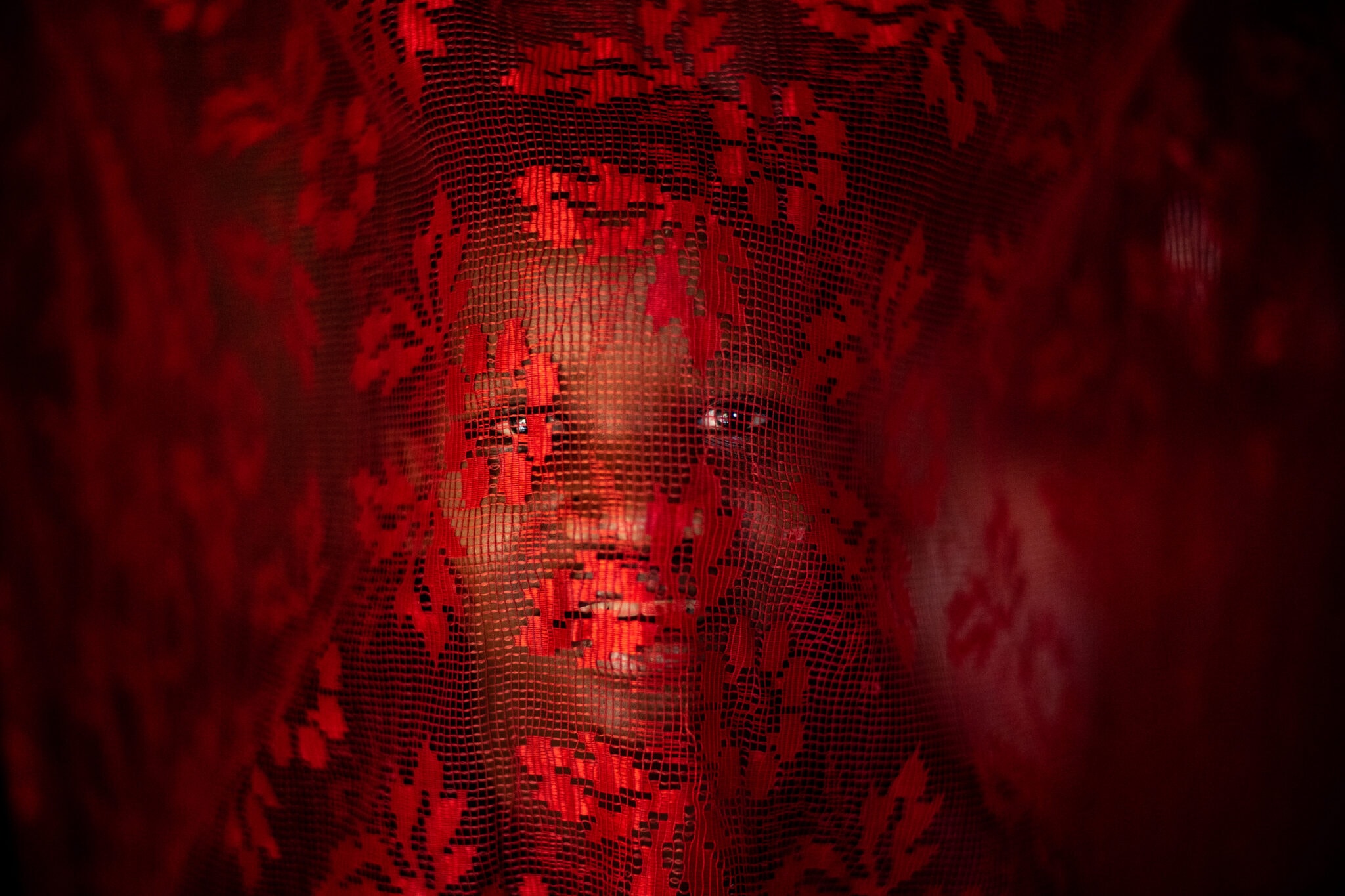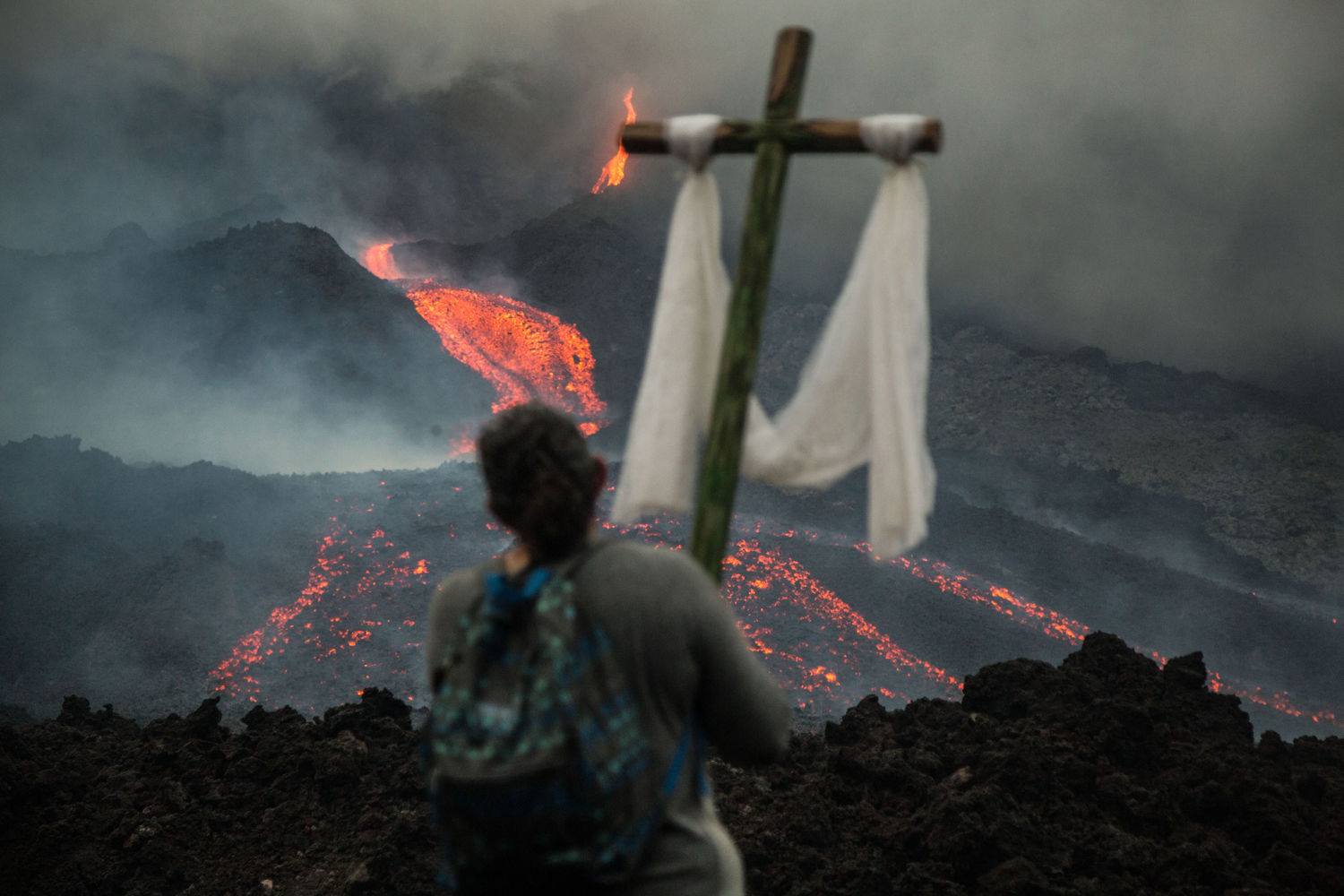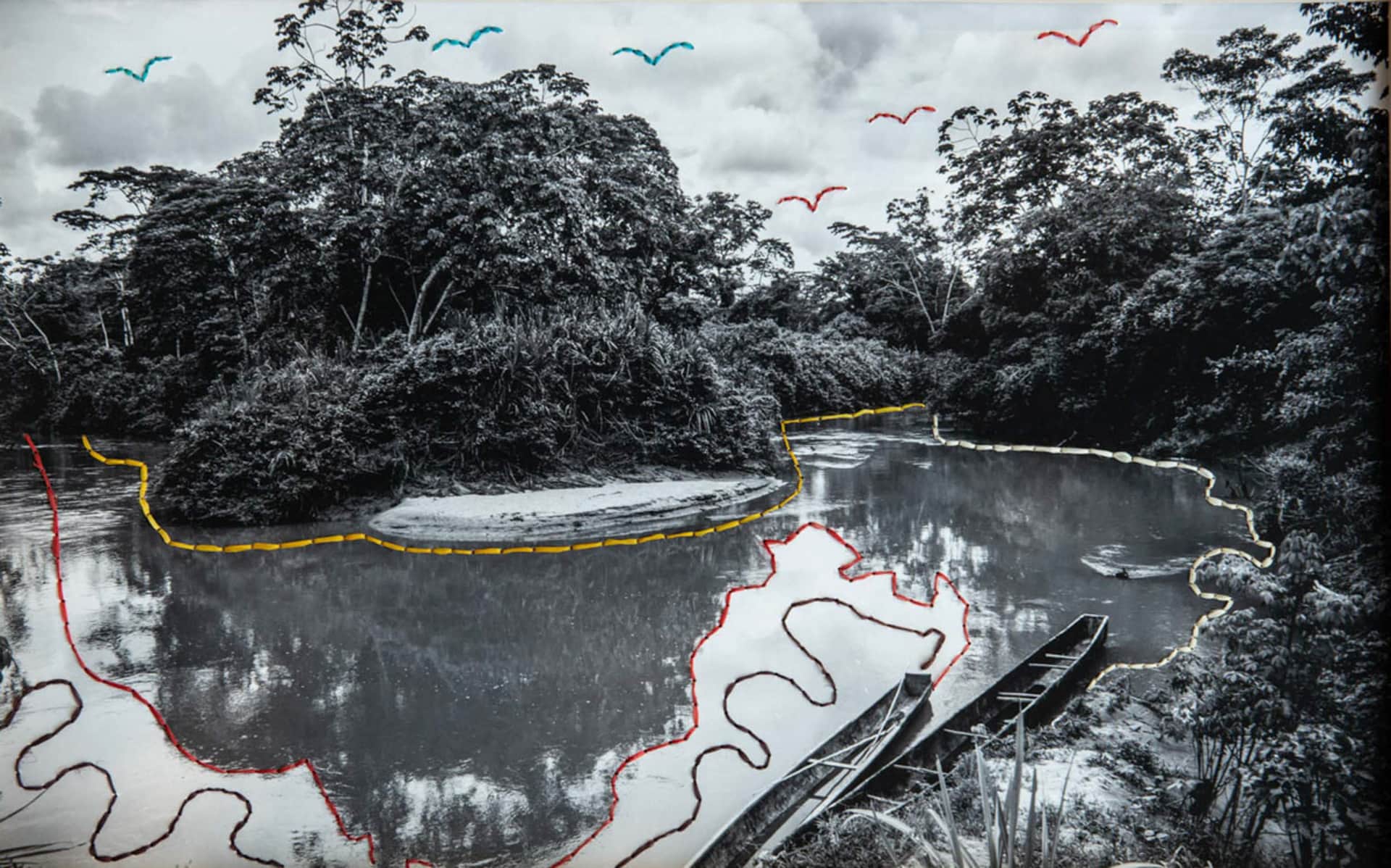
Where is Latin American photography heading?
Pablo Corral is the founder and director of the POY Latam Award, which has recognized excellence in Latin American documentary, journalistic, and artistic photography since 2011. In this conversation, the specialist discusses the winning works of the latest edition and provides an honest perspective on trends in photography in the region. Corral also discusses the measures taken by photography contests to remain relevant in the face of the economic and credit crisis that photojournalism is going through.
By Alonso Almenara
It happened with World Press Photo: the most famous competition that awards the best in photojournalism worldwide renewed its structure this year, replacing the traditional international competition scheme with a network of regional contests. For Ecuadorian photojournalist, writer, artist, and cultural manager Pablo Corral, it is a necessity of this era. He is the founder and director of the Poy Latam Award, a regional contest that has established itself in an adverse landscape marked by the crisis of photojournalism.
“The images have lost credibility,” he acknowledges. But he quickly abandons the fatalistic tone. The contest he has led since 2011 has made ambitious bets to better adapt to the paths that photography is taking. Among them is the opening of new categories. In addition to the so-called “Classic Categories,” which seek to distinguish excellence in works that use traditional tools of documentary photography, the “Open Categories” have now been added: it is a way of recognizing that there is photography that goes beyond the strict rules of photojournalism, that can use Photoshop and manipulate images. For Corral, “we will have to reflect on the disruptive capacity of artificial intelligence and the applications of stable diffusion. Soon, we won’t know if an image is real or generated.”

Winner Daily Life Category – Single Photo. Esteban Biba: “Praying” (Guatemala)
In its seventh edition, the POY Latam had two juries that evaluated 27,357 images from 1,388 visual creators from all Ibero-American countries. Eighty-eight works from 75 applicants from 13 countries were awarded. The complete list of winners is available here and includes names such as Ecuadorian photographer Isadora Romero, who won first place in the Transmedia category with her audiovisual work “La sangre es una Semilla” (Blood is a Seed). Meanwhile, Colombian Federico Ríos Escobar was selected as the Ibero-American Photographer of the Year. He also won two other awards: first place in the Human Rights category with a series of 10 photographs about migrants crossing the Darien Gap to reach the United States, and first place in the Photobook category with the essay “Verde” (Green), which collects 10 years of photographs from the armed conflict in Colombia.
Other notable winners include Mexican Félix Márquez (Single News Photo), with an image of a Haitian girl being carried by a migrant while crossing the Rio Grande, and Peruvian photojournalist Aldair Mejía López (News Series), with images of protests and police repression in Lima and other cities in Peru following the fall of Pedro Castillo and the assumption of power by Dina Boluarte.
Corral feels strangely uncomfortable with the rhetoric of awards: “This year, the jury for the Open Categories decided not to award first prizes in several categories,” he comments. “Before the judging, we eliminated the second and third prizes. We believe it is arbitrary to say that one work is slightly better than another; that makes no sense. We can only highlight some works. Perhaps it will be like this in the future.” With the same sincerity, he talked about his enthusiasm and reservations regarding the visual production he has had the privilege to examine as an observer over the past twelve years.
Winner Sports Category. Ana Elisa Sotelo: “Cardumen de mujeres” (Peru)

Winner Nuestra Mirada Category. Colectivo “Mujeres Mirando” (Ecuador)
“Something very clear is that the trend now is to tell more subjective stories, using evocative images or a combination of dreamlike or magical images with more realistic ones. That is the universal trend. It may seem outdated in 10 years, but it is the trend at the moment. Virtually all the winning stories have something subjective.”
What do you think of this year’s award winners, and what trends do you perceive in these works?
First, I believe it was smart to separate the contest into open categories and classic categories and have two completely different juries. That was a decision we made with the Consultative Council, and it has yielded excellent results: the contest received 25% more entries than two years ago, and I feel that it is consolidating very well. However, there is a crisis that we have known about for many years in the world of photojournalism. Few media outlets publish high-quality documentary photography, and few exhibition spaces fund projects. In Latin America, we see that the vast majority of works are funded by the visual creators themselves or by a few institutions such as National Geographic, Vist Projects, or ECO.
The global crisis of photojournalism compounds this crisis of photojournalism in Latin America: the crisis of image credibility. The idea of objective photography has been questioned for a long time. There is no such thing as purely objective photography. However, documentary and journalistic photography published in media outlets must maintain certain standards; otherwise, we are lying to the readers of those media.
But beyond the profound crisis that the world of visual creation is experiencing, I would say that it is a moment of supreme creativity. It is a moment of freedom in which people dare to do different things without even looking toward the North. Before, photography in Latin America was impossible without looking towards Europe or the United States. Now, we don’t even remember those photographers. Latin America has an impressive creative vigor, and there is autonomy or confidence in ourselves that did not exist a few years ago. That is refreshing.
Winner Human Rights Category. Federico Ríos: “Selva peligrosa ” (Colombia)
Winner News Category – Series. Aldair Mejía López: “El problema de la gente” (Peru)
Are there regions or countries where this vigor is more evident?
In countries like Brazil, Mexico, and Argentina, it is evident that there is a long-standing tradition that supports all creative efforts in the visual arts. But new countries have also emerged on the map, such as Ecuador, which didn’t exist before and now has excellent photographers working with leading media outlets worldwide. Of course, there is Peru, which has a very long tradition. Something evident is that schools, training spaces, and collectives play a vital role in this transformation of visual creation. There are Centers of the Image in Peru and Uruguay, and in Ecuador, we have had very fruitful years with an impressive number of workshops. I believe that this produces a transformation in the way stories are told.
I am pleased with the quality of the submitted works. The problem for the judges on this occasion was finding six outstanding pieces— the limit we set— because there were many valuable proposals in all categories.
How does the selection process work?
One of the characteristics of POY Latam is that it is completely transparent: you can visit our Facebook or YouTube and find the judges’ deliberations, which were broadcast live. They make a preselection; however, they review all the material before judging the category, and any jury member has the right to rescue images that are being left out because they don’t have the necessary two votes. In other words, people know who a judge is voting for and who they are not voting for. I believe that gives us a significant level of credibility because, to my knowledge, very few other contests have this level of transparency.
On the other hand, we decided to have two juries: one for the classic categories with a more traditional view of documentary photography, and another for the new or open types whose members come from the artistic world, not just the documentary field.
Winner Photojournalists in the World Category. Manu Brabo: “Mariposas Negras” (Spain)
Winner Long Term Projects Category. Andrés Cardona: “Mercy” (Colombia)
You mentioned the creative autonomy in Latin American photography. Is it something that is reflected in the winning works?
One of the most interesting categories this year was “Resignifying Archives”: it provided us with many surprises and was one of the most challenging in selecting the winners. Many photographers do incredibly creative things by re-appropriating family history or collective history. For example, there were excellent works by Glorianna Ximendas and Lucía Morón. The winning work by Marina Feldhues is powerful: it addresses the lynching and killings of people of color in different parts of the world, especially in the United States. It offers an exciting reflection on identity and violence. This category was also, by the way, one of the most controversial.
Why controversial?
One of the discussed works uses artificial intelligence. The work did not make it to the final round because the judges considered that there were more interesting works, not because of any prohibition in the contest. We have decided to accept using artificial intelligence as long as the image’s origin is specified. If the fact that artificial intelligence was used is concealed, that would be a reason for disqualification.
Winner Ibero-American Photojournalist of the Year 2023. Federico Ríos Escobar (Colombia)
“Latin Americans are trapped in the exotic. Why? Because the exotic is what sells. And because we need to revisit stereotypes and try to identify with or understand that fluid, always undefined identity of Latin America, of the mestizo. This is felt in photography: no matter how much we try to free ourselves from preconceptions, prejudices, and exoticism, they are more present than ever.”
What other category caught the jury’s attention?
The Long-Term Projects category. There is a work by the Brazilian photographer Luis Braga, for example, which is a symphony of color. It documents riverside life in the Amazon. Or the work by Florence Goupil on indigenous peoples and their relationship with plants. I believe that the most interesting proposals generally come from the open categories. It’s not about using tools but rather the conceptual richness.
How has the region’s photography landscape changed since the award’s creation in 2011?
The main change is that there used to be a strong prejudice against using tools like Photoshop or image manipulation. Photojournalists were very strict, and artists looked down on them to some extent. Now, virtually all photojournalists freely navigate between art and journalism. That terrible taboo of saying, “You changed something in the photo, so your photo is a lie,” no longer exists. All photos are a lie. Some are known lies, and others are yet to be discovered. What we are doing now is being honest about the ways of telling stories.
And something very clear is that the trend now is to tell more subjective stories, using evocative images or a combination of dreamlike or magical images with more realistic ones. That is the universal trend. It may seem outdated in 10 years, but it is the current trend. Almost all the winning stories have something subjective about them.
Winner News Category – Single Photo. Felix Márquez: “Migrant girl” (Mexico)
Portrait Category Winner. Alejandra Elías: “Los 9 de Juliaca” (Peru)
It is not far-fetched to say at this point that there are clichés in Latin American photography: I am referring, for example, to certain ways of representing indigenous peoples. How do contemporary photographers confront these preconceived narratives?
Latin Americans are trapped in the exotic. Why? Because the exotic is what sells. And because we need to revisit stereotypes and try to identify with or understand that fluid, always undefined identity of Latin America, of the mestizo. That is felt in photography: no matter how much we try to free ourselves from preconceptions, prejudices, and exoticism, they are more present than ever. Even in the most creative works, the influence of magical realism can still be felt, which remains one of the essential characteristics of visual creation in Latin America. We have fully embraced magical realism, once with fear, now with pride. But we are 40 or 50 years behind in comparison to the literature.
I believe we will become aware of the stereotypes we have promoted in about 20 years. We will realize our perspective now, but we need that perspective over time. We are enamored with a particular way of storytelling.
Winners in the category Our Vision. Cyro Almeida and Master Julio Santos: “Memory Limits” (Brazil)
Identity and Gender Category Winner. Silvana Flores: “Abuelas Trans” (Mexico)
How do you see the future of photography in the region?
I’m not a fortune teller, but let’s start with the fact that photography is becoming increasingly fluid through artificial intelligence and the ability to manipulate images. In the history of the image, there hasn’t necessarily been a correspondence between reality and the image. The image had always been independent of reality. One knew that a painting was a painting, that it was a representation of reality. The direct correspondence between reality and the image only occurred in the 20th century with the documentary pretense of photography. One of the problems we have now is that as photography becomes more fluid and less of a testimony and more of a game, manipulation, or symbol, the boundaries between reality and fiction are blurring. Very soon, it will be impossible to know the origin of the images.
On the other hand, the image is becoming more ubiquitous, meaning it is worth less. The eye of the visual storyteller will still be important. Still, the eye of the curator will be crucial in rescuing those few works that seem interesting amidst the sea of triviality. A period of excess and chaos is coming.
Does that concern you as organizers of a photography award?
I believe that the POY Latam Award is in a good place because it is very much in tune with the times we are living in. That will bring us many benefits. Additionally, we are going to expand our educational program. I hope this initiative remains relevant for several years, but I know it is a challenge. WordPress Photo had to completely reinvent itself to maintain its relevance.
Winner Environment, Carolina Hidalgo Vivar Award. Gabriela Portilho Matheus: “The Beekeepers” (Brazil)
Are you going through a similar transition?
What we have done is somewhat deeper. World Press Photo divided the competition into regional contests in its latest edition. We are already a regional contest, so we don’t need that. But WordPress Photo has also eliminated categories: they had to do it to adopt the new structure. On the contrary, we have increased categories. We also have a significant representation of female photographers: over 40% are women. The majority of the jury members are also women. That has been our position for several years and has yielded good results.
This openness and willingness to receive different types of images have been key, especially in doing it transparently. And regarding documentary photography, we take projects seriously, relying on judges who are experts in that field and share those values. Perhaps we are in a moment of schizophrenia in photography because both heads, the documentary and the artistic, act simultaneously. But, as I mentioned earlier, both give us bold and vigorous responses.


